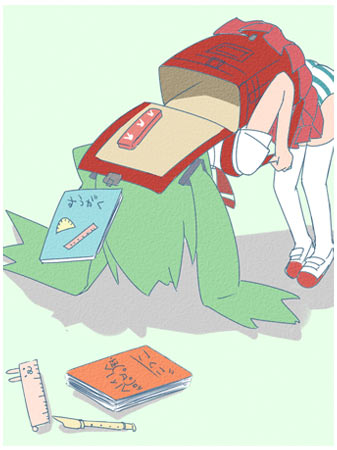One of my Twitter followers asked me, “How long did it take for bowing to become automatic when you learned Japanese?” so I thought I’d write on that topic. Bowing, of course, is a very big deal in Japan, something that’s done several times a day. There are many kinds of bows, from the casual 15-degree nod you’d make to a coworker or neighbor to the deeper (30-degree) bow of thanks you’d do when accepting your salary envelope from your boss, or the more formal (45-degree) bow made to a customer in a service industry. When I went to work for a large English school I had my first experience with chorei (lit. “morning bow”), a brRemove featured imageief formal meeting where the employees stand in a circle and basically promises to gambaru, or do their best and work hard, followed by a deep bow. One popular image in Japan is a cute elementary school child who bows deeply to someone, but she’s forgotten to latch her school backpack so all her school supplies fly out. I think that body language is one of the easiest things to learn when you come to live in a new country, and just seeing the mannerisms of people around here made it easy to pick up. I’ve even gotten the habit of bowing to someone while talking on the phone, which must look pretty strange to most people.

Bowing is an important (and potentially cute) part of Japanese culture.















